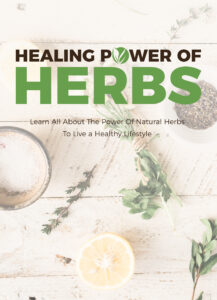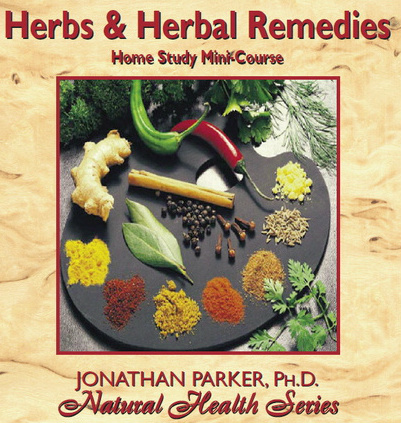What Herbs Are in Herbs de Provence?

Before diving in, please note: This post is for informational purposes only. If you’d like to know more about how we approach topics, feel free to check out our friendly Disclaimer Page.
Hey there, amazing readers! 🖐️ Just a quick note: yes, we know there are a lot of ads here. Trust us, we get it—it’s not the prettiest look, but they help us keep this blog alive and kicking. Those pesky little ads cover the costs of all the behind-the-scenes magic, from hosting and tech stuff to creating content we hope you’ll love.
We’re committed to delivering quality posts, and your support (even just sticking around despite the ads) means everything to us. So, bear with us, and thanks for helping us keep the good vibes rolling. Now, on to the fun stuff! 😉
TRANSLATE BUTTON AT THE END OF THE ARTICLE
A Quick Overview
Have you ever taken a bite of ratatouille or a perfectly roasted chicken and wondered what makes those flavors so vibrant?
If so, then let me introduce you to the magic of Herbs de Provence.
This delightful blend whisks you away to the sunny fields of southern France, where fragrant herbs thrive under the warm sun.
In this article, we’re diving deep into the individual herbs that make up this well-loved mixture.
From lavender’s sweet scent to the boldness of savory, I promise that by the end, you’ll not only know what herbs are included but also how to use them in your cooking!
Discovering the Flavorful World of Herbs de Provence
Herbs de Provence is a classic blend that captures the essence of French cuisine.
This mix isn’t just a random collection of herbs; it’s a celebration of flavors that hails from the Provence region in southeastern France.
Imagine strolling through bustling markets, surrounded by vibrant colors and aromatic smells wafting through the air.
That’s what this herb mix brings to your kitchen.
Originally, the herbs used in this blend varied greatly depending on the season and what was available.
Today, we commonly use a standard mix that features several key players.
This blend typically includes thyme, rosemary, oregano, and lavender, among others.
The combination brings warmth and depth to a variety of dishes, making it a staple in many kitchens around the world.
What I love most about Herbs de Provence is its versatility.
You can sprinkle it on grilled vegetables, toss it with roasted potatoes, or even use it to season meats.
Its flavors are comforting yet exciting, making it perfect for both everyday meals and special occasions.
So whether you’re whipping up a quick weeknight dinner or planning a fancy dinner party, this herb blend will elevate your dishes.
A Brief History of Herbs de Provence Mix
The journey of Herbs de Provence begins in the aromatic hills and sunny fields of southern France.
The region boasts a rich agricultural heritage, and the local cuisine has always relied heavily on fresh herbs.
While the exact origins of the blend are a little hazy, it gained popularity in the 1970s, thanks in part to the rise of French cuisine in the culinary world.
Traditionally, local housewives would gather herbs from their gardens and dry them.
These dried herbs were then mixed together, creating a blend that was used to season various dishes.
The name "Herbs de Provence" itself reflects this heritage, as it translates to "herbs from Provence."
Interestingly, the blend isn’t just limited to one specific recipe.
Some variations include additional herbs like sage, tarragon, or even fennel.
The inclusion of lavender, though, is perhaps the most distinctive feature, setting it apart from other herb mixes.
Today, you can find Herbs de Provence in markets around the globe, embodying the spirit of French cooking.
The Signature Herbs: Thyme and Its Friends
The foundation of Herbs de Provence is thyme.
This herb has a warm, earthy flavor that complements almost anything.
It’s incredibly versatile and can be found in a variety of cuisines.
I often reach for thyme when I want to add depth to my soups and stews.
Discover the "Healing Power of Herbs" 🌿
Its slight minty aroma balances beautifully with meats and veggies, making it a true kitchen staple.
Thyme pairs wonderfully with other herbs in the mix.
Its earthy notes create a harmonious blend with lavender’s sweetness.
When combined with rosemary, you get a fragrant, piney aroma that invites everyone to the table.
Did you know that there are various types of thyme?
Common thyme is often used in cooking, while lemon thyme brings a refreshing citrusy note.
Both varieties can shine in your dishes, so don’t hesitate to experiment.
Lavender: The Sweet Aroma in Herbs de Provence
Now let’s talk about lavender.
Some might be surprised to find this floral herb in a savory blend, but it adds a delightful twist.
Lavender brings a sweet, aromatic quality that lifts the overall flavor profile.
When used in moderation, it can transform a simple dish into something extraordinary.
I remember the first time I used lavender in cooking.
I had my doubts, thinking it might taste like soap.
But I was pleasantly surprised!
A sprinkle of dried lavender in a roasted chicken recipe made the dish sing.
It’s like a little secret ingredient that brings a taste of the French countryside right into your kitchen.
When working with lavender, a little goes a long way.
Too much can easily overpower your dish, so I recommend starting small.
It pairs beautifully with thyme and rosemary, creating a fragrant blend that’s perfect for roasted meats or vegetables.
Savory: A Herb with Bold, Unique Flavors
Savory is another key player in Herbs de Provence.
It has a strong, slightly peppery flavor that adds a punch to the mix.
This herb often gets overshadowed by its more popular counterparts, but it deserves a spotlight of its own.
Did you know that there are two main types of savory?
Summer savory offers a milder taste, while winter savory has a more robust flavor.
I like to keep both on hand for different culinary adventures.
Summer savory is perfect for light dishes, like salads, while winter savory shines in heartier meals like stews.
When I incorporate savory into my cooking, I often use it with beans or lentils.
Its peppery notes bring life to my favorite vegetable dishes, making it an indispensable herb for me.
Oregano: A Mediterranean Classic in the Blend
Oregano is synonymous with Mediterranean cuisine, and it seamlessly fits into the Herbs de Provence blend.
Its warm, slightly bitter taste adds depth to the mixture, making it essential for many dishes.
I often think of oregano as the workhorse of my spice cabinet.
It can enhance everything from pizza to pasta and everything in between.
In the context of Herbs de Provence, oregano complements the other herbs beautifully.
Its robust flavor stands up well when paired with the light, floral notes of lavender.
What I love about oregano is its ability to transform a dish with just a sprinkle.
Whether you’re making a salad dressing or seasoning a roasted chicken, a little oregano goes a long way in boosting flavor.
Rosemary: The Piney Herb That Elevates Dishes
Rosemary is often celebrated for its strong, aromatic presence.
Its pine-like flavor and scent can transport you straight to a rustic kitchen in Provence.
This herb is another essential component of Herbs de Provence, adding a woody depth to the mix.
When I think of rosemary, I picture it paired with roasted meats, particularly lamb or chicken.
The aromatic quality of rosemary cuts through rich flavors and adds a wonderful freshness.
It’s also fantastic in potato dishes, where its earthy notes shine.
One of my favorite tricks is to tuck a few sprigs of fresh rosemary under chicken skin before roasting.
The results are mouthwatering!
It’s the kind of flavor that makes you want to gather friends and family around the table to share a meal.
Basil: A Sweet Herb Adding Freshness to Recipes
Basil is often associated with Italian cooking, but it finds a cozy home in Herbs de Provence too.
Its sweet, slightly peppery flavor adds brightness to the blend and balances the more robust flavors of thyme and rosemary.
When using basil, freshness is key.
I love adding fresh basil leaves to salads or pasta dishes, but dried basil can work wonders in cooked recipes.
Whether you’re making sauces, soups, or marinades, basil can liven up the dish.
Discover the "Healing Power of Herbs" 🌿
I often throw in a handful of basil leaves during the last few minutes of cooking.
This way, you retain that vibrant flavor and aroma.
Tarragon: A Touch of Anise for a Unique Flavor
Tarragon might not be the most common herb in every kitchen, but it has a unique flavor profile that sets it apart.
Its licorice-like taste adds an interesting twist to the blend.
While not always included, when tarragon is part of Herbs de Provence, it brings a refreshing layer of complexity.
I like using tarragon in sauces, especially creamy ones.
It pairs beautifully with chicken, giving a delightful anise flavor.
For those who love seafood, tarragon also works wonders with fish dishes.
Remember, when using tarragon, a little goes a long way!
Its strong flavor can easily overpower other ingredients, so sprinkle it sparingly.
Marjoram: The Soft Spice That Complements Well
Marjoram is often overshadowed by its stronger cousin, oregano, but it has its own charm.
Its mild, sweet flavor adds a gentle touch to the Herbs de Provence mix, rounding out the blend beautifully.
I love using marjoram in lighter dishes.
It shines in vegetable medleys, bringing a subtle earthiness that complements fresh vegetables.
I often toss marjoram into my salads for an unexpected flavor boost.
Since marjoram has a delicate flavor, it’s best added towards the end of cooking to preserve its aroma.
Blending It All: How to Use Herbs de Provence
Now that we’ve explored the individual herbs in Herbs de Provence, let’s talk about how to use this magical blend.
The beauty of Herbs de Provence lies in its versatility.
You can sprinkle it on roasted vegetables, mix it into marinades, or even incorporate it into bread dough.
Here are some creative ways to use Herbs de Provence:
Marinades: Combine olive oil, vinegar, and a generous sprinkle of Herbs de Provence to create a delightful marinade for meats or vegetables.
Roasted Dishes: Toss your favorite veggies or meats with olive oil and Herbs de Provence before roasting for a flavorful punch.
Soups and Stews: Add a spoonful of this herb blend to soups and stews for added depth and richness.
Salads: Mix it into dressings or sprinkle it over salads for a fresh kick.
Pasta Dishes: Incorporate it into your tomato sauce or sprinkle over pasta for a Mediterranean flair.
Experimenting with Herbs de Provence is part of the fun!
Don’t be afraid to get creative and find new ways to enjoy these flavors in your meals.
Cooking Tips: Elevate Your Dishes with These Herbs!
To wrap everything up, here are some handy tips for using Herbs de Provence effectively:
Start Small: If you’re not familiar with this blend, start with a small amount.
You can always add more, but it’s tough to take it back once it’s in the dish!
Combine with Fresh Ingredients: Fresh vegetables or meats will showcase the flavors of Herbs de Provence best.
The blend shines through in high-quality, fresh ingredients.
Experiment with Cooking Methods: Try using Herbs de Provence in different cooking methods, like grilling, roasting, or sautéing, to see how it changes the flavor profiles.
Store Properly: Keep your Herbs de Provence in a cool, dark place to preserve its aromatic qualities.
A sealed jar is your best bet for longevity.
Pair with Complementary Ingredients: Think about the dish you’re making.
Pair these herbs with ingredients that enhance their flavors, like garlic, lemon, or olive oil.
Now that you’re armed with all this knowledge, I can’t wait for you to start using Herbs de Provence in your cooking!
The flavors of these herbs will transport you to sunny French fields, and your taste buds will thank you for it.
Conclusion
Herbs de Provence is so much more than just a blend of herbs; it’s a tribute to the rich culinary traditions of southern France.
With signature herbs like thyme, rosemary, lavender, and others, this mix brings warmth and vibrancy to your cooking.
By understanding the individual flavors of each herb, you can enhance your dishes and bring a touch of Provence into your home.
Whether you’re simmering a hearty stew or tossing a salad, the versatility of Herbs de Provence knows no bounds.
So grab a jar and start experimenting!
Happy cooking!

The Enlightenment Journey is a remarkable collection of writings authored by a distinguished group of experts in the fields of spirituality, new age, and esoteric knowledge.
This anthology features a diverse assembly of well-experienced authors who bring their profound insights and credible perspectives to the forefront.
Each contributor possesses a wealth of knowledge and wisdom, making them authorities in their respective domains.
Together, they offer readers a transformative journey into the realms of spiritual growth, self-discovery, and esoteric enlightenment.
The Enlightenment Journey is a testament to the collective expertise of these luminaries, providing readers with a rich tapestry of ideas and information to illuminate their spiritual path.
Our Diverse Expertise 🌟
While our primary focus is on spirituality and esotericism, we are equally passionate about exploring a wide range of other topics and niches 🌍📚. Our experienced team is dedicated to delivering high-quality, informative content across various subjects ✨.
To ensure we provide the most accurate and valuable insights, we collaborate with trusted experts in their respective domains 🧑🏫👩🏫. This allows us to offer well-rounded perspectives and knowledge to our readers.
Our blog originally focused on spirituality and metaphysics, but we’ve since expanded to cover a wide range of niches. Don’t worry—we continue to publish a lot of articles on spirituality! Frequently visit our blog to explore our diverse content and stay tuned for more insightful reads.
Discover the "Healing Power of Herbs" 🌿
Unlock the ancient wisdom of herbal remedies with this comprehensive guide! Perfect for beginners and enthusiasts alike, this e-book dives into the powerful benefits of herbs for health, wellness, and natural healing.
Inside, you’ll find:
Easy-to-follow recipes for teas, tinctures, and remedies.
A guide to the most effective herbs for common ailments.
Tips on growing and storing your own herbs.
Transform your health naturally and embrace the healing power of nature. 🌱 Start your journey today!







